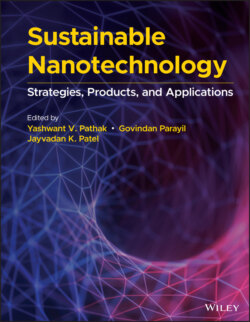Читать книгу Sustainable Nanotechnology - Группа авторов - Страница 32
1.4.2 Air Purification
ОглавлениеAir is a unique essential resource needed by living beings. Unlike water, living without air is quite impossible for aerobic species. With water, part of the problem is that it is inaccessible to some remote areas of the world. With air the situation is different because there is an abundance of breathable air, the only problem is the quality of it. As the global population increases and continues to spread, the result is the settlement of factories and other industrial buildings and an increase in automobile use, which contributes to the poor quality of breathable air.
Some examples of nanotechnology used in air purification methods are CNTs, GNPs, and nanocatalysts. CNTs have a small pore structure and large surface area of functional groups, which can be manipulated through optimum chemical or thermal treatment. These characteristics allow CNTs to be highly efficient in trapping perilous substances from the air [102]. Unlike CNTs, GNPs have shown to exhibit converting characteristics. For example, when combined with titanium dioxide, GNPs are able to convert sulfur dioxide present in polluted air into sulfur [103]. Nanocatalysts also exhibit converting characteristics. The surface area of these catalysts is large enough for chemical reactions to take place. These reactions are able to convert the harmful gases produced by automobiles and factories into safe gases.
